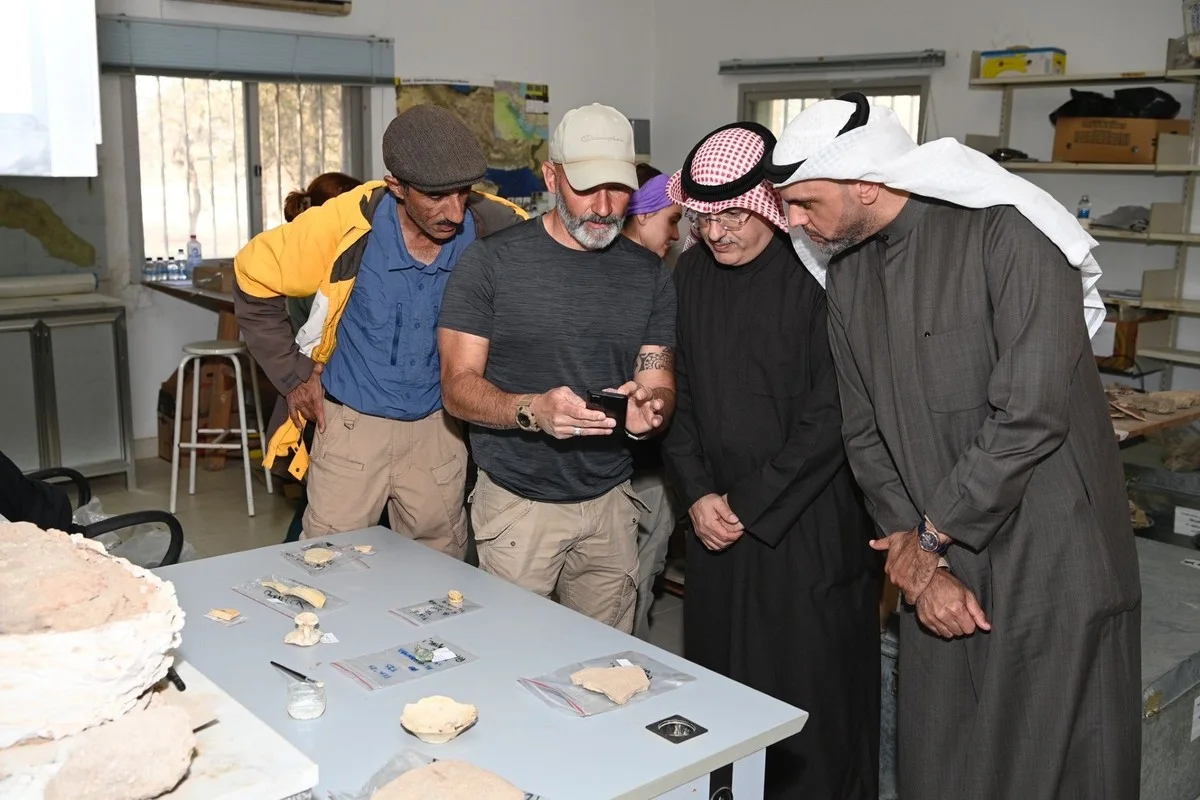16/02/2025
16/02/2025

KUWAIT CITY, Feb 16: The National Council for Culture, Arts and Letters (NCCAL) announced on Sunday the discovery of a courtyard and a building dating back to the Hellenistic period, approximately 2,300 years ago, located to the west of the Al-Qurainiya site on Failaka Island.
In a statement to Kuwait News Agency (KUNA), Mohammad bin Redha, Acting Assistant Secretary-General of the Council for Antiquities and Museums, revealed that the Kuwaiti-Italian archaeological mission made this discovery during their work at Al-Qurainiya, a settlement spanning multiple historical periods, including pre-Islamic, early Islamic, and late Islamic periods. The site is located in the northern part of Failaka Island, overlooking the sea directly.
Bin Redha explained that the team uncovered the rock foundations of the building, an internal wall, and an entrance that links the external courtyard with a room. Inside the room, many remains of plastered walls were found, along with numerous pottery items dating back more than 2,000 years.
He emphasized that the oldest layer at this site dates back to the third and second centuries BC, making it one of the largest archaeological sites on Failaka Island.
Since 2014, Al-Qurainiya has been one of the most significant sites for archaeological surveys and excavations, carried out in collaboration between the NCCAL and the University of Perugia in Italy. Dr. Andrea De Micheli, the head of the Italian mission, has supervised the excavations.
Bin Redha also noted that the Council has expanded its collaboration in the current season, involving various sectors such as Kuwait University, international laboratories, and the Italian mission. This cooperation aims to use modern laboratory equipment to investigate topics such as the methods of preparing gypsum, the original materials used at the site, and the types of clay employed in pottery production.
Dr. Hassan Ashkanani, a Professor of Archaeology and Anthropology at Kuwait University, described the discovery of the Hellenistic-period building as a significant archaeological achievement for Failaka Island. He pointed out that previous findings from this period were concentrated in the southwestern part of the island, specifically in the Tell Saeed area. However, this new discovery, located in the northern part of the island, suggests the expansion of Hellenistic presence in the region.
Ashkanani added that the discovery indicates that the Hellenists likely used the Al-Qurainiya site as a control point, port, or central hub in the northern part of the island, complementing the Hellenistic dwellings, castle, and temples found in the southern part.
Dr. De Micheli, speaking about the 2025 excavation season, noted that the focus would be on the western part of the Al-Qurainiya settlement, where remains of a courtyard and building from the Hellenistic period were found. Other excavations have revealed stages of early and late Islamic settlements, showing that the area was inhabited intermittently for over 1,800 years.
From 2014 to 2020, excavations uncovered various buildings, mostly dwellings, dating back to the early Islamic period (8th century AD). The site was abandoned by the late 8th or early 9th century but saw renewed human activity from the second half of the 18th century until the early 20th century. The discovery of large quantities of pottery and ovens has provided valuable insights into daily life at the Al-Qurainiya site.
The remains of the Al-Qurainiya site span approximately 500 meters from east to west, directly along the sea coast, and extend inland for about 250 meters to the south. The site includes numerous dwellings built from limestone, mud bricks, and pottery from various periods, making it one of the largest archaeological sites on Failaka Island.


